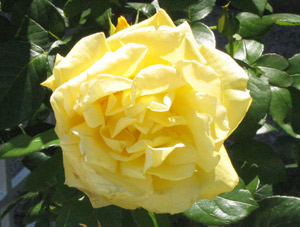
|
Web design by: Jacqueline Curcio |
Story by:Cook Alciati |
|
Photos by: Cheryl Trovato |
Video by: Candace Cage
|
|
A number of environmental groups in the Cagli area have banded
together to protect their natural environment while trying
to bolster their economic development through ecotourism,
according to Aldo Loris, coordinator of La Macina, a local
environmental group in Cagli.
Groups such as La Macina work ardently in the area to promote
ecotourism through education, which is defined as tourism
involving travel to areas of natural and ecological interest,
typically under the guidance of a naturalist, for the purpose
of observing wildlife and learning about the environment.
|
|
| |
Loris says the issue of protecting the landscape has escalated
in the past eight to 10 years because industrial developers
are increasingly interested in the logging and gravel-mining
opportunities near Cagli.
Cagli is located in La Regione Marche in central Italy. It
is surrounded by three mountains—Monte Nerone, Monte
Catria, and Monte Petrone—that are laden with trees,
providing clean air. Additionally, the Burano and Basso rivers
flow throughout the countryside providing pure drinking water
in Cagli.
Monte Nerone, particularly, offers an abundance of hiking
trails, which would directly aid in the promotion of ecotourism
in the area.
Loris says that there is a great debate as to how economic
development will be handled. The issue is how to increase
economic development without ruining the environment. |
|
|
|
Loris says that the purity of the land and the richness of
the landscape instill great pride in the Cagliesi.
This richness, coupled with the industrial threat, has spawned
a number of environmental groups that seek to satisfy a need
for economic improvement by promoting environmentally friendly
tourism.
These groups include La Macina, Arancia Blu, Lega Ambiente,
WWF Italia, Greenpeace, Lupus in Fabula, Argonauta, and Il
Grande Albero.
Loris says that these environmental groups reflect the strong
interest in protecting the natural landscape from industrial
scarring.
Davide Barbadoro, president of Il Grande Albero, or The Big
Tree, says that a common goal of all the groups is to protect
specific plants and animals indigenous to the area.
|
Several rare species of plants are in danger of extinction.
Endangered animals include a rare type of woodpecker and a
rare salamander. These two species are found solely in the
mountains around Cagli.
Loris says that ecotourism would both protect the environment
and promote needed development.
Opening the area to more ecotourism would capitalize on the
abundance of hiking/mountain-biking trails, which could generate
an influx of tourists while creating more jobs for local townspeople
familiar with these trails, he said.
Although the potential influx of tourists could be seen as
a threat to the environment, according to Barbadoro it seems
that ecotourists would not damage the pristine environment
they want to enjoy by taking part in ecotourism. |
|
| |
Loris has said that his group, La Macina, markets the region’s
hiking and biking trails in local hostels and in classrooms
to children from kindergarten to the 12th grade.
According to Barbadoro, the possibilities for increasing
ecotourism are abundant because there are already a number
of hiking and biking trails with well-documented maps to lead
tourists through the mountainous region.
There are also many unexplored grottos and caves as well
as a number of relatively unused spelunking trails. In addition
to the well-documented trails, the mountains are equipped
to handle camping.
The area boasts many bed-and-breakfasts as well as agriturismo
centers, which are usually situated in wooded areas offering
natural swimming pools as well as gourmet, organic cuisine.
Such agriturismi provide a vacation that satisfies both a
need for ancient Italian culture and a love of nature, according
to a brochure published by the Sant’ Apollinare, located
to the south of Cagli in neighboring Cantiano. |
|
|
Centers of this type serve ecotourists, as they are trying
to escape the industrial lifestyle by vacationing in ecologically
pristine locations.
“While tourism is strongly developing in La Regione
Marche,” said Barbadoro, “it is important to realize
that it is niche tourism, not mass tourism, which suggests
that ecotourism services need to be coordinated by larger
groups such as mine to ensure better marketing of ecotourism
products.”
Beyond providing jobs for trail leaders, increased ecotourism
would provide jobs in the restaurant and campground industries
offering tourism-related services that could spur economic
development in the region without an industrial influence,
he said. |
|
“In order for these services to be offered, however,
the area must receive full protection on a legislative level,”
he added. Other areas in the region are fully protected as
natural reserves like La Gola del Furlo, an ecologically similar
area recently protected.
Even though the Cagli area is not yet fully protected, area
groups are optimistic that their community will be granted
full protection from industrial damage. It has been approved
for institution of a national park under current Italian-European
environmental legislation.
Barbadoro said, that the main stumbling point for complete
approval is a lack of funding which is necessary to employ
people ensuring protection of rare plants and animals coveted
for both monetary and collection purposes. |
|
 |
“Although development of ecotourism is clearly feasible,”
said Barbadoro, “it is essential, as I mentioned before
that the environmental groups must organize their services
in order to concretely develop tourism in La Regione Marche.”
He also said that expanded collaboration could move eco-tourism
from its infant stages to a fully functioning industry benefiting
all of the people in the region.
There is great potential for expansion because surrounding
areas such as Umbria and Tuscany are already near capacity
in the ecotourism market, he said.
“Promotion would come specifically through tourist
trade fairs and seminars as well as workshops on both a national
and international level,” said Barbadoro
|
|
|

